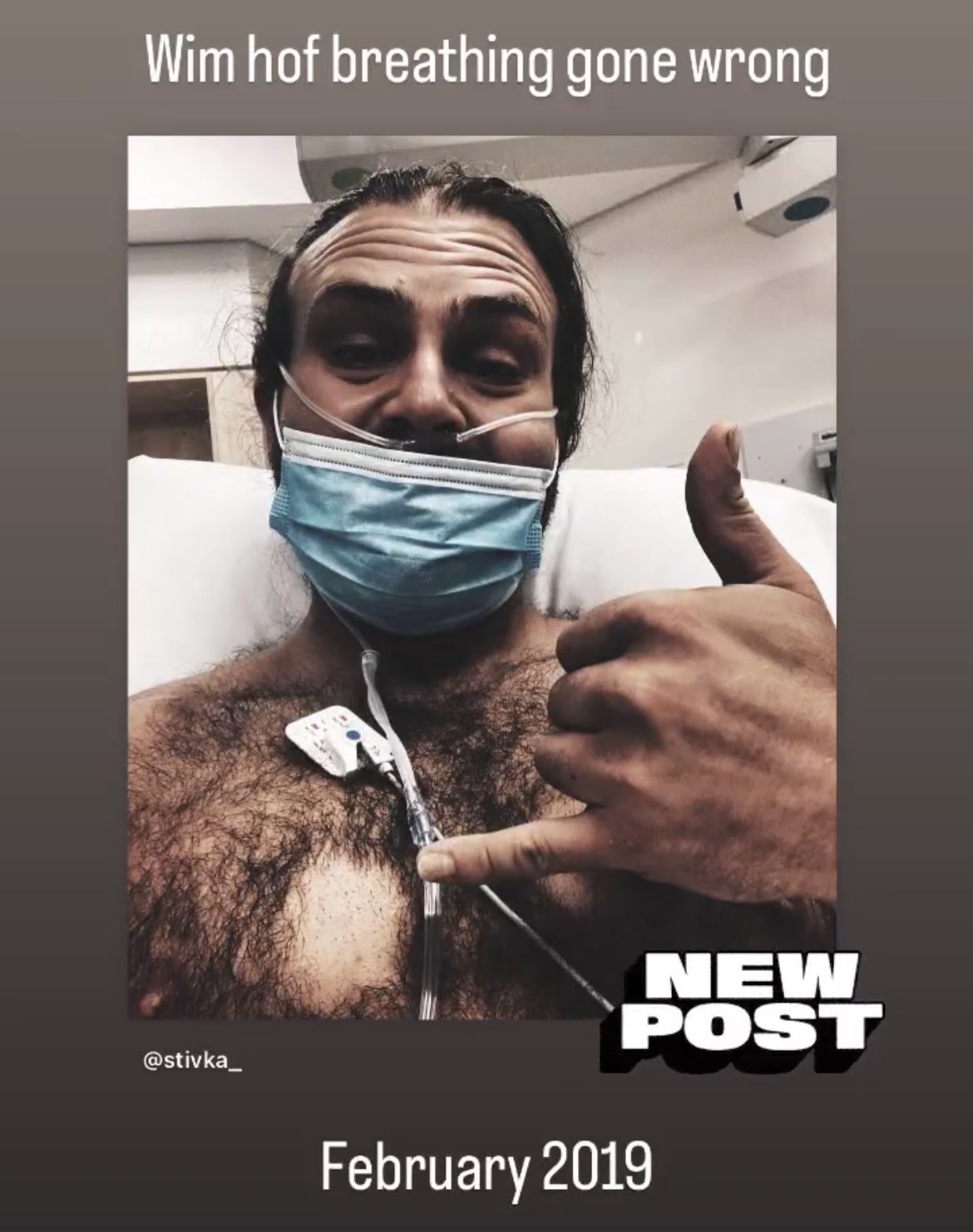The Risks of One-Size-Fits-All BreathWork

Two years ago Steve (@Stivka3 on Instagram), a breathwork instructor from Australia, hurt his lungs badly doing the WHM exercise…the very wrong way, without being aware of it. Steve gave me permission to share this story. In his own words, at the end of his breath hold, he experienced the most painful thing he'd ever felt, and every gasping breath he took was followed by an excruciating blood-drenched cough.
What happened?
The nurses at the hospital were worried, he felt he may not make it, was kept in observation and released 4 days later with this diagnosis: ruptured alveoli. Neither the doctors at the hospital nor anyone in his breathwork entourage could explain how this happened.
Until I reached out to him, Steve was left with mere assumptions as to what could have caused such a dramatic incident. When I talked to him, instead of asking him questions I described to him what had happened:
"First you hyperventilated, then forcefully exhaled to the max you could… towards the end of the breath hold you kept fighting through very strong diaphragmatic spasms until you reached the breaking point." "Yes I did exactly that" he replied.
Then I went on and explained to him what caused the ruptured alveoli. The "breaking point" is when you breathe again...except that you're not supposed to "break" anything in your body, ever…unless you do something wrong. Steve made a BIG mistake by pushing the exercise to the limits in two ways: He maximally exhaled before holding his breath (which is fine) but he kept pushing despite experiencing multiple strong diaphragmatic contractions (BIG NO NO).
He pushed himself this strong out of the noble quest which to reach extreme limits of himself that he had never explored before. But little did he know that this breath-holding approach is unsafe and could potentially harm your lungs because he had never been educated on that risk by the very people how taught him this exercise. The hyperventilation before the hold did not directly contribute to the injury, but it did indirectly.
Let me explain:
Whereas an increase in CO2 blood level is not the only reason for the urge to breathe, it is an important factor that triggers it. By hyperventilating before a breath hold, you're significantly lowering the level of CO2 in your blood and tissues. Since you will start holding your breath with an abnormally low level of CO2, it will take longer for you to feel the effect of the CO2 buildup and the urge to breathe. This explains why one can "magically" hold their breath longer when they hyperventilate before. It is comparable to putting an 8mm wetsuit on before cold plunging, it will take longer before you start feeling the effect of the cold, right?
By exhaling maximally, Steve started with the lowest oxygen reserve. By hyperventilating, he started with a very low level of CO2. As a result, he reached hypoxia - a low level of O2 in the bloodstream and body - fast, but while not feeling it as early as he should have. By the time he felt it, he was already hypoxic, and his autonomic nervous system felt highly threatened and was trying hard to make him resume his ventilation by causing strong diaphragmatic contractions. But he kept going...
Now his lungs were near, empty, only containing what's called "residual volume", a very small volume of air, which also means that the inner walls of his lungs have the least space between them, make sense? Strong diaphragmatic contractions create a depression or sucking effect to generate negative pressure inside the lungs so that by the time the airways finally open, the outside air that is at regular atmospheric pressure can be pulled in based on the difference of air pressure.
Except that Steve would keep consciously refusing to open up his airways until his unconscious mind, the autonomic nervous system responsible for his survival kept contracting the diaphragm even harder in a desperate attempt to get oxygen back into the body. Except that Steve would keep consciously refusing to open up his airways...until his unconscious mind, the autonomic nervous system responsible for his survival kept contracting the diaphragm even harder in a desperate attempt to get oxygen back into the body.
Ultimately, that pull became strong enough to partially make the inner walls of his lungs touch each other. When the fragile alveoli - tiny sacs that absorb oxygen molecules to diffuse them into the bloodstream - touch each other, they BURST and BLEED. That blood then needs to be coughed out from the lungs, it hurts a lot and the lungs feel like they're on fire.
Here is what you can learn from Steve's unfortunate experience and story: BreathWork - the manipulation of your ventilatory pattern - and BreathHoldWork - the complete absence of ventilation for prolonged periods, aka breath-holding or "apnea" - are not the same at all. Breath-holding requires serious and specific knowledge that is neither known nor taught in the breathwork milieu. BreathHoldWork teaches you about the only two risks associated with breath-holding: Doing it immersed in water without being watched by a competent safety partner.
Secondly breath-holding on a forced exhale after hyperventilation can make you reach low O2 that has the potential to:
- Make you faint, drown and die.
- Cause a rupture of your alveoli (“lung squeeze"), serious injury.
- Wreck your nervous system.
Those issues happen when people are shown "cool" drills or tricks but aren’t warned about the risks, often by breathwork facilitators who themselves are completely unaware of such risks. The goal of this post is to educate and hopefully help people better understand what to NOT do.

